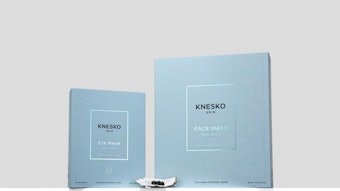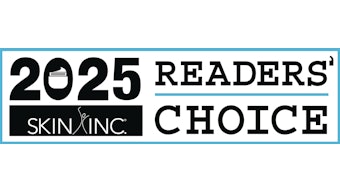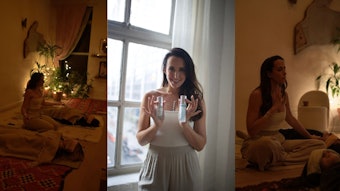Do you know your buying public? Do you know what they want? What are their values? How do they interact with the world? Today, products touting natural/organic/wellness aspects have become ubiquitous—reflecting a changing consumer public that is better educated and, thus, more product- and service-conscious.
There are 12 truths of natural/organic/wellness consumers—what drives them, what they think matters, and how all of you can communicate and deliver to them the promise of naturals.
Truth 1. Consumers of naturals and organics are looking for a more sophisticated connection to their purchases. They seek out quality, although they are not above being swayed by the “image” of naturalness.
Truth 2. Although naturals of every variety really have come into their own on the market, organic launches suffer from higher costs. In addition, because world governments have yet to unify behind a naturals standard, consumers are left to wonder what exactly they are getting. How would the natural/organic segment benefit from national or global standards?
Truth 3. The key to naturals is consumers’ growing association of beauty with health and wellness. Notions of longevity and mortality now are commonly linked with personal care and spa offerings. Considering the wide acceptance of organic shopping, as well as the existence of an aging baby boomer population, all things natural have a promising future.
Truth 4. Unfortunately, the corollary between health/wellness and beauty has not yet reached the majority of teens. The sad fact is that many adolescents are willing to do almost anything for the sake of beauty. This presents a huge opportunity for the spa and beauty industries, which are grooming this demographic for growth. If they can help teens make the health-beauty connection, the opportunities will be vast.
Truth 5. One of the key factors in naturals is the “trading-up” principle, in which consumers pay a bit more for an indulgence—opting for Starbucks in lieu of the corner coffee shop, for example. We also are beginning to see the rise of guiltless indulgence, such as food-scented candles—sensory pleasure without the health consequences.
Notions of guilt manifest in other ways as well. Naturals is the arena in which social responsibility and personal well-being/health meet. By embracing natural products, consumers are making a choice not just about the items, but about how they want to live their lives. Married to this concept is the idea that naturals will lead back to simplicity and comfort—also known as “back to basics,” a concept seen in the spa industry.
Truth 6. I’m sure many of us know someone who buys or doesn’t buy products based on political or personal values. In naturals, this sense of responsibility sends a strong message of fair trading relationships, coupled with the perception of a greater benefit from naturals. Just as a vanilla-scented candle offers sensory pleasure without the caloric guilt, natural/organic products provide sensory benefits without the attendant social guilt. Natural products declare that you can indulge yourself with a clear conscience, because we are what we buy!
Truth 7. The way to consumers’ hearts is through their bellies. Kitchens are a major gateway into the naturals market, with the increasing presence of all-natural and ethnic foodstuff creating familiarity and acceptance. The lesson here: If someone is willing to eat it, they will be willing to slather it on their skin. Some examples of this phenomenon include the Alpine Strawberry Smoother from the Golden Door Spa at The Peaks in Telluride, Colorado; the French Toast Facial at Asana Spa by Body Bistro; and the Wine and Honey Wrap at The Spa at The Crescent in Dallas.
Truth 8. As naturals break into mass-market channels, a split reveals itself between natural newbies and old-school enthusiasts. The latter are label scrutinizers who cannot be fooled by greenwashing—the process of simply slapping the word “natural” on a jar. They know what to look for, and they know when they are being lied to. Old-school naturals consumers also could be called cultural creatives.
CulturalCreatives.org describes this group as “50 million Americans who care deeply about ecology and saving the planet; about relationships, peace and social justice; and about authenticity, self-actualization, spirituality and self-expression.” In short, they are the most loyal and demanding naturals consumers.
Truth 9. Natural must mean effective. The Natural Marketing Institute (NMI) has stated that 28% of the general population desire natural personal care products fortified with functional ingredients. Merely calling something natural isn’t enough. There must be results. Seeing is believing.
Truth 10. The rise of the do-it-yourself (DIY) culture is good news for the naturals segment. Young women are knitting again. They’re making their own cosmetics. They can go online and design a personalized fragrance. The prevalence of this culture reflects consumers’ desire to connect with the things they use and to take charge of their lives.
This trend has reached every kind of woman, from homemakers to punk rockers. Whether they’re seeking independence or comfort, DIY consumers want to know where things come from and how they affect them. If we are what we buy, it goes double for what we make.
Truth 11. The media can be a tastemaker. Most of us saw the report a few months ago in which the Chicago-based Smell and Taste Institute’s study results revealed that the scent of grapefruit can lead men to perceive women as being an average of five years younger. Never mind the particulars or the reproducibility of the results. The public now believes that grapefruit scent makes women look younger. I haven’t seen any studies, but I imagine there’s been a run on all things grapefruit scented.
For better or worse, CNN, Time magazine and other media representatives are our primary sources for medical, scientific and consumer information. Once a study makes headlines, it quickly becomes part of the public consciousness. This can work for and against the personal care and spa industries. You should constantly ask yourself: “Is the media working with me or against me, and how can I harness that power?”
Truth 12. Tell consumers a story. The Keebler Elves in their hollow tree, Cap’n Crunch defending the SS Guppy from Crunch Berry pirates, Juan Valdez questing for the perfect coffee bean—everyone loves a product with a back story. Spa and personal care offerings are no different. Are you selling a story? Do you know the stories behind your products? A story, among other things, is crucial to creating an emotional connection between consumers and your offerings.
Recapping the truths
So, what do the 12 truths tell us? In order to reach today’s sophisticated naturals consumers, you must address the whole person—spiritually and emotionally—while delivering functionality. In doing so, you must reach all consumers—from shortsighted teens to fussier cultural creatives. Give them guilt-free indulgence and a sense of self-determination. Educate them directly and through the media. Tell them a story about the origins of your products or services. This is the path to success in naturals.










